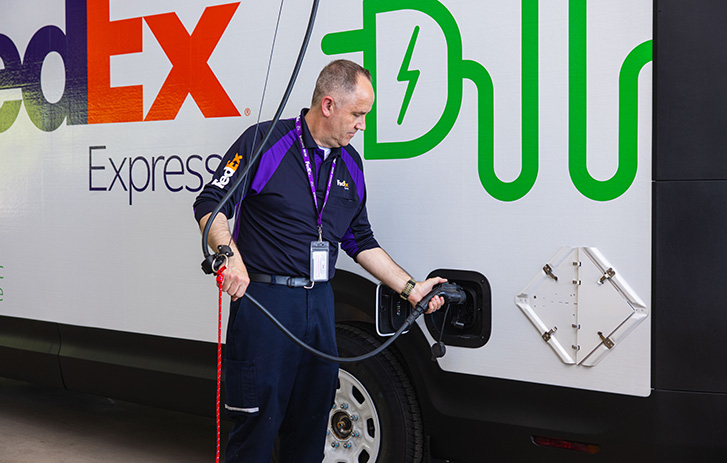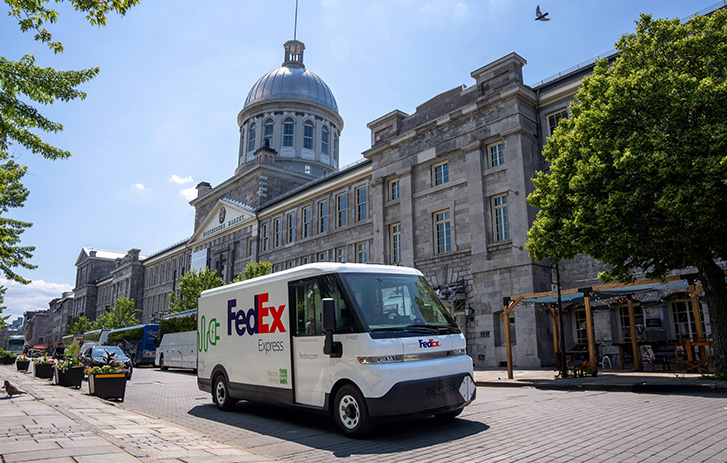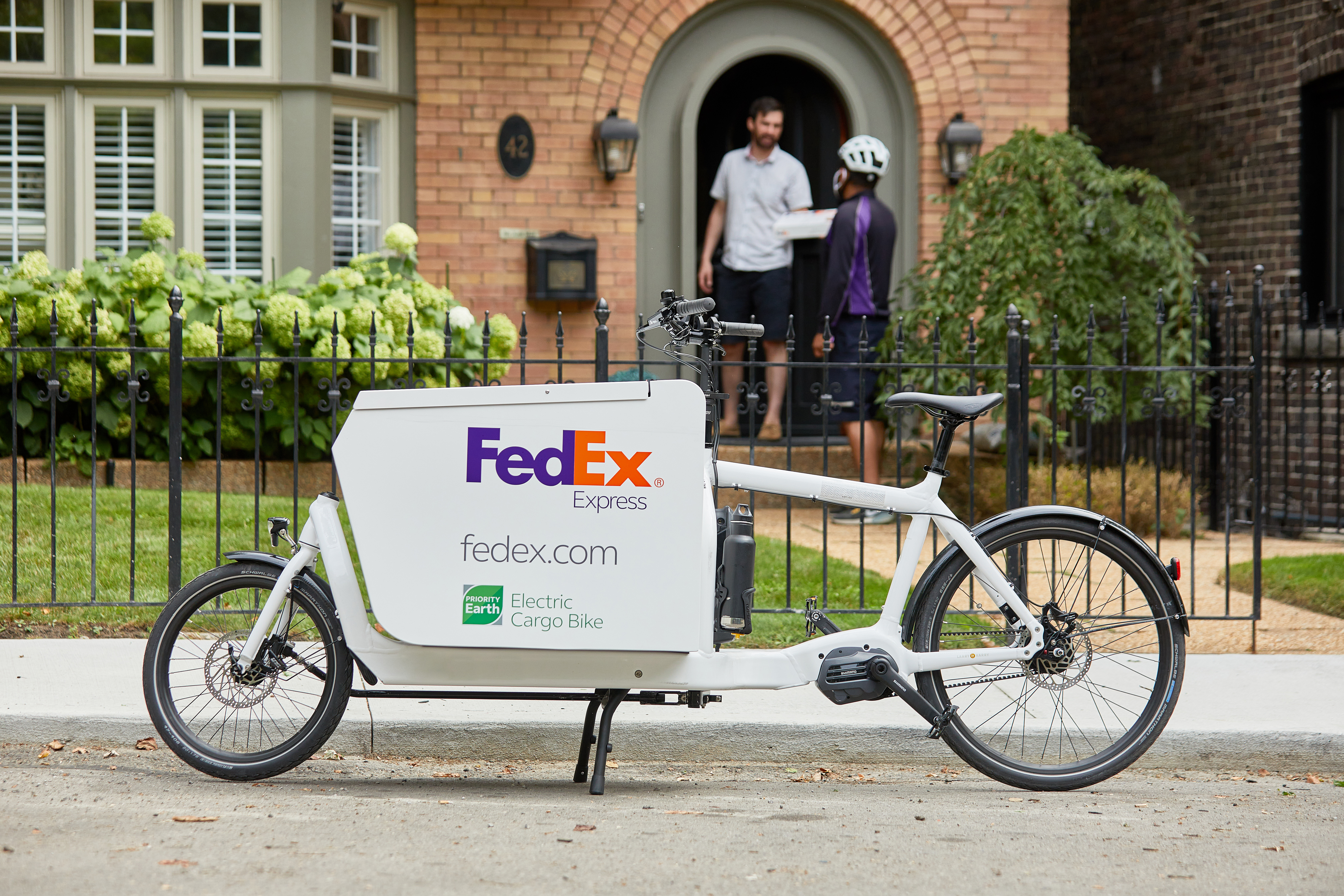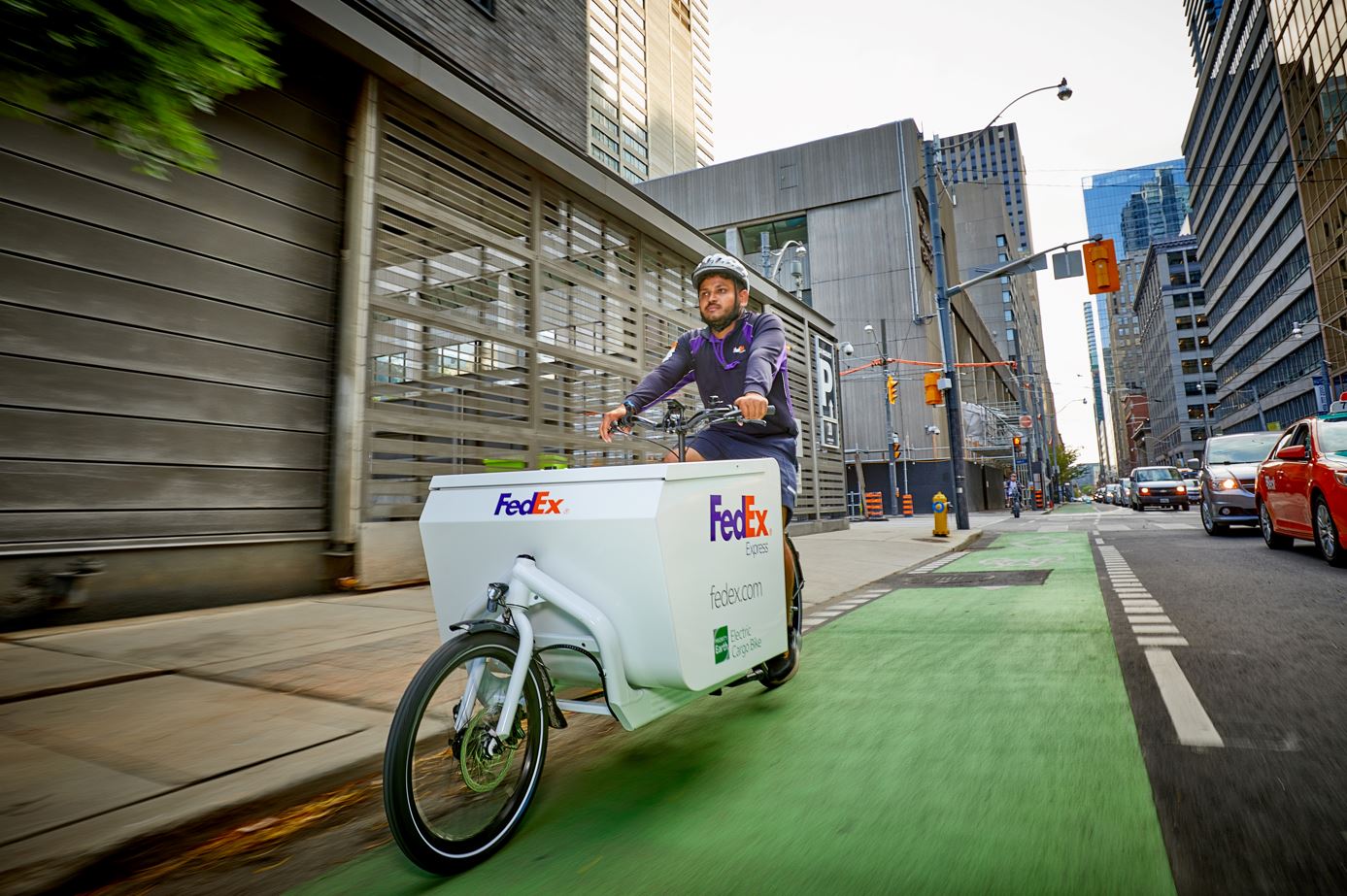
Charged up about electric vehicles
Driving toward our goal: Carbon neutral operations by 2040
FedEx has more alternative fuel vehicles in our fleet than ever before, and we’re working toward our goal to transition our entire pick-up and delivery fleet to all electric vehicles by 2040. In fact, FedEx has long been an advocate for alternative forms of energy, introducing our first electric vehicle, powered by a lead-acid battery, in California in 1994. And in 2003, we were one of the first delivery companies to use hybrid vehicles for pickup and delivery, including in Toronto, Ontario.
In Canada, we operate over 4,800 vehicles, so replacing our owned pick-up and delivery fleet with electric vehicles will be a major focus. Our team has been exploring and implementing ways to reduce the environmental and congestion impacts from delivering packages throughout the country. In 2020, we launched a fleet of cargo e-bikes in Toronto – the first for FedEx in the Americas. Since then, our e-bike fleet has become one of the largest in our global network with e-bikes now in operation in cities coast-to-coast. Canada has also undertaken various pilots to test new technologies that aim to reduce carbon emissions from our operations and improve how we deliver. We’re proud to contribute our learnings to help FedEx scale an electrification strategy for our global pickup and delivery fleet.
FedEx electric vehicles on the move
Technology is advancing and manufacturing is scaling, which should help us as we work toward an all-electric parcel pickup and delivery fleet by 2040—one of the steps on our journey to carbon neutral operations. Electric vehicles, e-cargo bikes, autonomous vehicles, and electric pallets can help us improve how we deliver. As we work toward a more sustainable future and our goal of carbon neutral operations by 2040, we're exploring electric vehicles and working to build a charging infrastructure to support them. Canada is home to some of North America's first BrightDrop Zevo 600 electric vehicles (EVs). Our first 50 EVs in Canada have been deployed in Ontario, Quebec, and British Columbia. They boast zero tailpipe emissions, 600+ cubic feet of cargo room and up to 400 kilometers range per full battery charge.
See why we're pumped about e-cargo bikes
These electric-assisted bicycles produce no operating emissions and are an innovative addition to our streets, helping reduce traffic, and air and noise pollution in crowded urban centres. They are revolutionary in more ways than one – their size makes them easy to navigate and park, which can help speed up deliveries, and they can travel up to 150 kilometres on a single charge. Take a look and see why we're excited about our e-bikes!
Charging ahead: Building charging infrastructure across our network
An electric fleet is only useful when it’s able to be charged. Expanding the vehicle-charging infrastructure at our facilities is a critical part of transitioning our pickup and delivery fleet to EVs. That’s why we will work with power utilities, provincial and local governments, and regulatory agencies on broader low-carbon infrastructure solutions, and we’ve already started installing charging stations across our Canadian facilities in anticipation of our growing EV fleet.



In the News: Our First Canadian EVs
We’re taking action to create an electric parcel pickup and delivery fleet. Learn more about the electric vehicles in our Canadian network helping to bring us closer to our global goals.



Delivering a more sustainable future
See our new EVs and e-bikes in Vancouver
Exploring the new
FedEx EVs
Take a inside look at our new Zevo 600 EVs
A behind-the-scenes look at our station
See how our operations work and meet our Vancouver team
E-bikes
Trading gas pedals for bike pedals to parcel out packages.
FedEx Sustainability in Action
For additional information on our sustainability efforts, including efforts from teams around the world, visit our global Sustainability page.
* Includes carbon (CO2), methane (CH4), and nitrous oxide (N2O).



